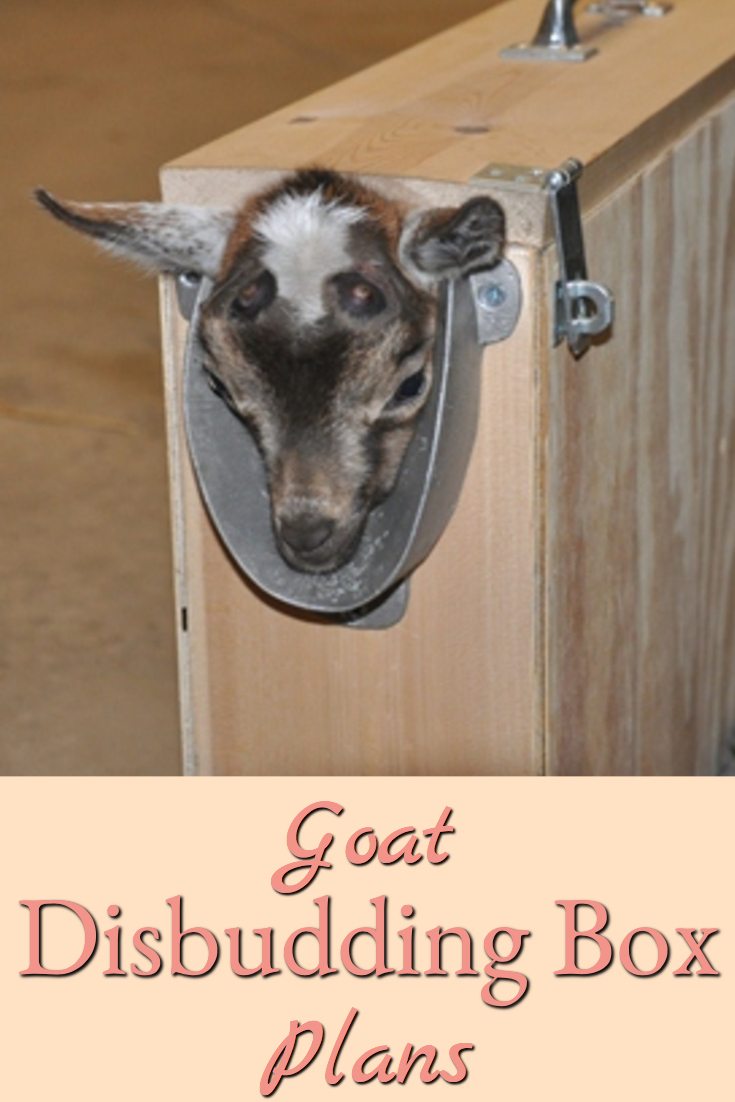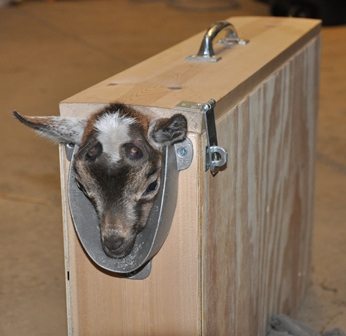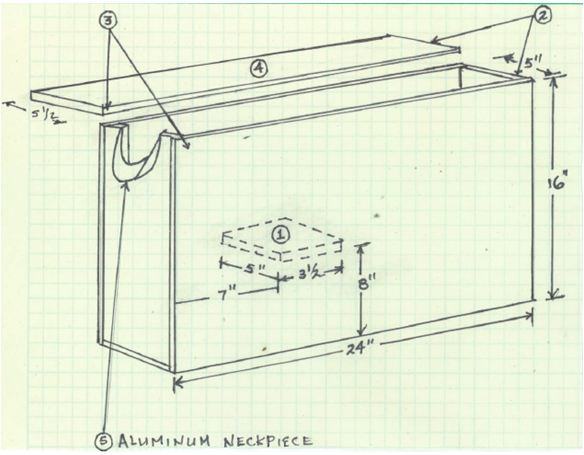We no longer use a disbudding box when removing horns from goat kids (See “Disbudding Goats – A Newer Method“) 
Why Disbud (Remove Horns)?
Many people are surprised to learn that most goat kids (except the few that are naturally polled (hornless)) start growing horns a few days after they’re born; but that most people don’t want their goats to have horns. So, the horns are typically removed when the kids are babies using a process called “disbudding”.
The reasons horns are considered detrimental are:
- Horns get stuck in things and can cause goats to injure themselves
- Goats with horns can hurt each other when they “play” butt each other
- Horns can hurt people
- Horns can damage fences, barns, mangers, etc.
- Hornless goats are generally worth more because people prefer them
- Horns can break, and a goat can bleed to death from a broken horn
- Goats generally can’t be shown in 4H or shows if they have horns
How Goats Are Disbudded
Disbudding is generally done to kids when they are 3 – 10 days old, depending on when the horn buds break through the kid’s skull (bucks generally need to be done sooner than does). It’s done by using a hot iron to cauterize the area around the horn bud so that blood can’t flow to the horns and make them grow.
My post on disbudding (Disbudding Goats) describes how we originally learned to disbud goats, and for that process, a wooden “disbudding box” is an essential tool. It keeps the kids relatively still during the process.
Disbudding Box Plans
Here’s an easy to build goat disbudding box plan – the picture down below shows the finished box with Bramblestone Ruby inside serving as a model.
Lumber (dimensions in inches)
Belly Board – 1 x 5 x 3 1/2 (#1 in Sketch)
Ends – 1 x 5 x 15 3/4
Sides – 1/4 x 16 x 24
Top – 1 x 5 1/2 x 24
Bottom – 1 x 5 x 24
Numbered Hardware Items (Locations Shown in Sketch)
#2 – 3” T-Hinge
#3 – 2 1/2” Hasp
#4 – Handle
#5 – Aluminum Neckpiece – can be obtained from Caprine Supply

Assembly of the box is fairly straightforward and the photo above shows how it should look when finished.
The disbudding process isn’t difficult, but’s it’s painful to the baby goat (kid) for the few seconds it takes to do it (so they certainly don’t want to hold still) and it can be difficult without a box like this to contain the kid. The box shown in the plan can be used for either standard or miniature breed goats.
It’s my least favorite chore associated with kids and is one reason we’ve started to bring polled genetics into the Bramblestone Farm herd.

Carrie Duff says
Love, love, LOVE
Thank you so much! Find out so many wonderful things every time??